Lombardi, Lorenzo (2024) Design advantages of the ZTNA model: Architectural Evolution for More Secure and Efficient Remote Access. Masters thesis, Dublin, National College of Ireland.
Preview |
PDF (Master of Science)
Download (1MB) | Preview |
Preview |
PDF (Configuration Manual)
Download (307kB) | Preview |
Abstract
In recent years, several companies have faced major changes in their network due to new challenges regarding network security. Most of these companies massively increased their number of remote workers due the Covid-19 pandemic. If the remote access was a plus in the past, nowadays it is a required benefit for all those employees that look for a better work life balance. Since workers are the weakest link in the cybersecurity chain, the remote access makes these challenges even harder than ever. It’s a common thought, and widely demonstrated, that social engineering is still one of the worst threats in cybersecurity landscape because either of the unpredictable behaviour of human beings and the most sophisticated attack techniques that can take advantage of the modern Artificial Intelligence capabilities too. Because of this, security connectivity between remote users and companies has important implications. Even if remote access solutions have been largely used for years, it’s now a critical point more than ever since it is now available not only for technical personnel but for all those ones that just need to access to the company resources stored in a private data centre or in a public cloud.
Several kinds of solutions have been developed during the years, and among the most used there are the remote access tools like VPN. Some of them are reliable providing good performance but it’s time to consider that further precautions are needed and maybe upgrade those solutions following new security standards.
The legacy approach is called also “Castle-and-moat”. Once the user gets the network access can reach several destinations on the same network segment.
On the other hand, the new approach starts from the assumption that everybody and everything can be potentially a threat, regardless of the source place. You must consider the refinement of technical solutions in the field of cyber threats, the possibility of exploiting systems vulnerabilities, the ease of careless action of the user opening a phishing-type email. You need to be aware that a device or account breach could be absolutely hidden for a long time before it is discovered.
Starting from this awareness, a new approach is not just a choice but it’s a needed action to stay competitive against the cybersecurity threats, and it may be an opportunity to seize advantages of the new model: the Zero Trust Network Access (ZTNA).
| Item Type: | Thesis (Masters) |
|---|---|
| Supervisors: | Name Email Spelman, Ross UNSPECIFIED |
| Uncontrolled Keywords: | Cyber Threats; VPN; ZTNA; Network Design; New Security Model |
| Subjects: | Q Science > QA Mathematics > Electronic computers. Computer science T Technology > T Technology (General) > Information Technology > Electronic computers. Computer science Q Science > QA Mathematics > Computer software > Computer Security T Technology > T Technology (General) > Information Technology > Computer software > Computer Security R Medicine > Diseases > Outbreaks of disease > Epidemics > COVID-19 Pandemic, 2020- |
| Divisions: | School of Computing > Master of Science in Cyber Security |
| Depositing User: | Ciara O'Brien |
| Date Deposited: | 23 Jul 2025 14:43 |
| Last Modified: | 23 Jul 2025 14:43 |
| URI: | https://norma.ncirl.ie/id/eprint/8221 |
Actions (login required)
 |
View Item |

 Tools
Tools Tools
Tools